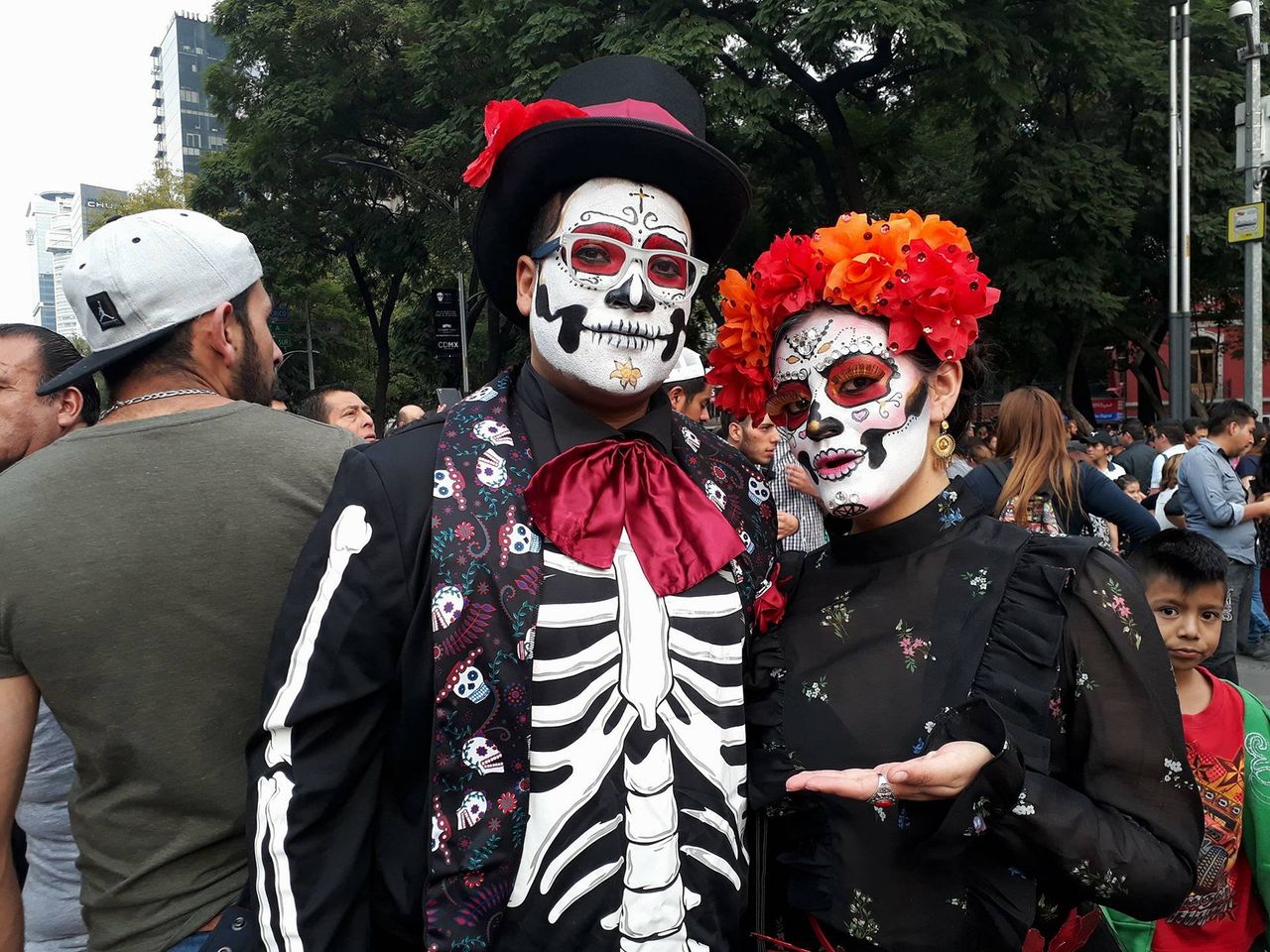
The celebration of the Day of the Dead is one of the oldest Mexican traditions. On this occasion, a special parade is organized in Mexico City. People go out on the streets dressed up as death, the ones at home prepare altars honoring those who passed away.
The goddess of death
The ritual of remembering the dead dates back to before 1521, when Mexico was conquered by the conquistadors. In Aztec mythology Mictlan was described as the land of the dead with Mictecacihuatl as its queen. For the Aztec, the female ruler represented the beginning and the end. She was usually portrayed with her breasts unveiled, with fat folds on her stomach (as a result of numerous pregnancies) and having a skull instead of a human head. According to a legend, people after their death had to cover a threat-ridden road and at the end they met with the queen and the king who provided them with eternal rest.
The Aztecs worshiped their deceased in August, which was the ninth month of their calendar. While celebrating the religious rituals in front of a stone sculpture of the goddess of death, they would reminisce the dead children and members of distant family. After the conquest of Mexico by the Spaniards, the beliefs of the indigenous people blended with the Catholic religion and added a more colorful aspect to the festivities.
The elegant Catrina
Mictecacihuatl these days has been replaced by Catrina. This skeleton figure dressed in elegant women’s clothing can be found at the beginning of October on store displays and at entrances to apartment complexes. Catrina was invented over a century ago by Jose Guadalupe Posada, a Mexican cartoonist. Initially, her portrayal in his stories was ridiculing the Indians who, as they were growing richer and richer, would forget about their roots. Over time, this elegant lady has become a symbol of death. Before the Day of the Dead, a lot of people go out on the streets dressed up as Catrina.
The home altars
On the Day of the Dead, the Mexicans usually decorate the graves of the deceased but those who can’t make it to the cemetery prepare a small altar for a deceased person. Next to the photograph there is usually a burning candle that is supposed to help the dead find their way into our world. Favorite food and drinks are also prepared. The graves and altars are adorned with orange flowers – cempasuchil which in Mexico are believed to symbolize death. The Aztecs believed that the flowers represent the way which the dead need to cover to spend the day with their loved ones.
The sugar skulls
Skulls in Mexico have a positive association as they the symbols of rebirth in the Mayan and Aztec cultures. The members of the latter civilization would also collect the skulls of their enemies and use them for religious ceremonies.
Nowadays, some of the stores start selling the chocolate or sugar skulls as early as in October. All the bakeries also sell “the bread of the dead” – sweet rolls with sugar powder. On the other hand, the Skull Festival is organized in the city of Aguascalientes between October 28th and November 6th. It includes a parade, many concerts and shows. One can also visit the Museum of Death with over 2,000 topic-related exhibits.
The cycle of life
On November 1st and 2nd people in Mexico don’t talk about the deceased as they believe that death is a metaphor for life. Someone is born in order for somebody else to die. The same people who are now preparing the altar for the deceased will themselves be invited to a party one day.























